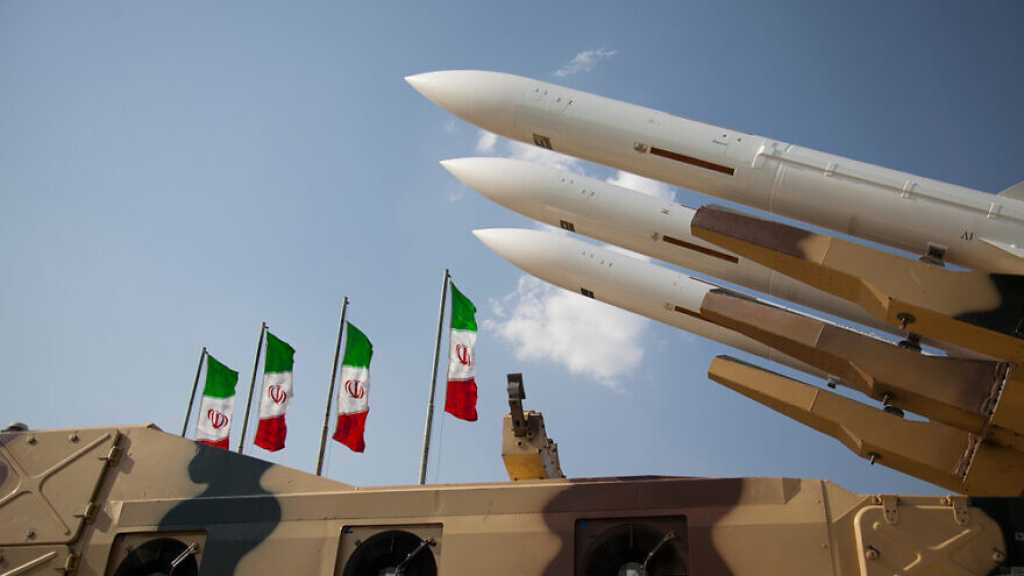Iran’s Missile Capability: A Western Perspective

By Mohammad Hammoud
Iran's missile program has evolved into one of the most formidable military forces in the Middle East. Recent analyses from Western military officials and experts indicate that Iran's missile capabilities have dramatically advanced, positioning it as one of the most advanced and well-stocked missile arsenals in the region. This evolution has created a highly credible threat, particularly against regional adversaries such as “Israel” and US bases in the Middle East and beyond. The recent missile launches targeting “Israel” demonstrate this capability, showcasing remarkable precision. This article explores the evolution of Iran's missile capabilities, the implications of its recent advancements, and the concerns raised in the West.
The Evolution of Iran's Missile Capabilities
Iran’s missile program began in the 1980s, with initial assistance from North Korea. Over time, however, some of Iran’s missiles have reportedly surpassed those of Pyongyang. Jeffrey Lewis of the Middlebury Institute of International Studies at Monterey noted that North Korea may now be importing missile technology from Iran. According to the US ‘Defense’ Intelligence Agency, Iran has become the largest missile producer in the Middle East, possessing a vast and diverse arsenal. The precision and reach of its missiles are particularly alarming to Western analysts, who view these developments as fundamentally reshaping the region's security landscape.
One of the most concerning developments for the West and its regional allies is Iran’s capacity to achieve "overmatch." This term refers to Iran’s ability to launch more missiles than adversaries, such as “Israel” or the United States, can effectively intercept. The sheer volume and growing complexity of Iran's missile arsenal make it nearly impossible for air defense systems to neutralize every incoming projectile. General Kenneth McKenzie has described this as a strategic imbalance, severely undermining the effectiveness of “Israeli” and US missile systems.
Recent Developments and Their Implications
This overmatch was vividly demonstrated in a recent large-scale missile barrage, during which Iran launched approximately 180 ballistic missiles in a single day—one of the largest missile offensives in modern warfare. This assault successfully overwhelmed “Israel’s” sophisticated Arrow 2 and Arrow 3 missile systems, targeting critical sites, including the “Nevatim” airbase, home to “Israel’s” F-35 fleet. This event underscored that even the most advanced defenses could not intercept all incoming missiles.
The missiles used in this assault, such as the Fattah-1 and Kheibar Shekan, are particularly advanced. These missiles reportedly use maneuverable warheads and solid fuels, making them more difficult to intercept. The sophistication of these weapons has raised concerns in Western defense circles, as even advanced missile defense systems, which are limited in number and costly to deploy, may require multiple interceptors to neutralize a single threat.
Technological Advancements and Regional Impact
Iran’s missile technology has improved not only in range but also in complexity. The development of hypersonic ballistic missiles, capable of traveling at speeds exceeding five times the speed of sound, represents a significant leap forward. These missiles follow unpredictable trajectories, further complicating interception efforts. The integration of such advanced systems shifts the balance of power further in Iran’s favor.
Moreover, Iran’s arsenal includes both ballistic and cruise missiles capable of delivering devastating payloads over long distances. Some of Iran’s most advanced missiles, such as the Fattah-1 and Kheibar Shekan, exhibit improved accuracy and range, enabling strikes on targets over 1,400 kilometers away. Their maneuverable warheads make them even harder to intercept, allowing for precise targeting even after bypassing missile defense systems.
These advancements enable Iran to strike targets with high precision, as demonstrated in previous attacks like the 2019 cruise missile strike on Saudi oil facilities and the 2020 missile strike on the Al Asad airbase in Iraq. These developments indicate a shift from previously inaccurate systems to more modern and effective ballistic and cruise missiles capable of reaching targets across vast distances—even areas over 1,300 miles away, extending the threat to Europe, Russia, and the Horn of Africa. Such capabilities convey a clear message to “Israel” and other adversaries: Iran's missile threat is not merely theoretical but poses a tangible risk, with potential to disrupt global energy supplies and cause significant damage to military and civilian targets alike.
A particularly alarming aspect of Iran’s missile program is the existence of underground missile complexes, known as “missile cities.” These extensive tunnel networks, carved into mountain ranges, protect Iran's missile arsenal and its nuclear facilities from aerial attacks, complicating adversaries' efforts to neutralize Iran’s missile capabilities preemptively.
Implications for "Israel" and the United States
Recent missile attacks have raised significant concerns about “Israel's” ability to protect civilian infrastructure and densely populated areas. Iran has explicitly threatened to target “Israeli” power plants, oil refineries, and other critical sites in retaliation for any Israeli strikes on Iranian territory. The potential for civilian casualties and widespread destruction is increasingly worrisome for “Israeli” policymakers as they deliberate their responses to Iran's missile threats.
For the US, Iran’s missile advancements complicate strategic calculations in the region. US military planners must now account for Iran’s ability to overwhelm air defenses and launch precision strikes across the Middle East, posing a direct threat to US assets and allies. The scale and complexity of Iran’s missile program also serve as a powerful deterrent, raising the stakes for any military confrontation.
Conclusion
The evolution of Iran's missile capabilities represents a profound challenge for Western powers. The ability of Iranian missiles to strike with precision, volume, and at considerable ranges complicates the security calculus across the region. Analysts caution that Iran's demonstrated capacity to overwhelm air defenses, coupled with its intent to target civilian infrastructure, signals a new era of missile warfare that could unleash devastating consequences for regional peace and security
Comments




